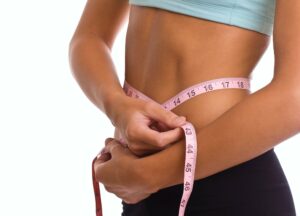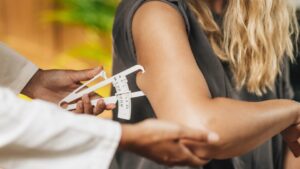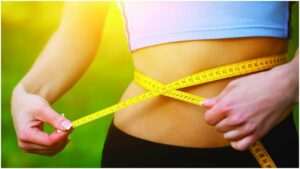When it comes to assessing our health and physical fitness, body fat measurement is a key indicator. It provides us with valuable information about our body composition, which can then be used to accurately measure our overall health and wellness. But what exactly is body fat measurement? How do you go about doing it accurately? And why is it important in the first place? In this blog post, we’ll answer all these questions and more as we explore the critical role of body fat measurement in assessing our health.
Contents
What is Body Fat?

Body fat is the tissue composed of adipocytes that are found in certain areas of the body. It is different from other types of fat, such as visceral fat, which is found in the abdomen, and subcutaneous fat, which is found under the skin.
The amount of body fat you have will depend on your age, gender, and level of activity. For example, young women tend to have more body fat than young men, and inactive people tend to have more body fat than active people.
In general, you want to keep your body fat percentage low. Having too much body fat can lead to health problems such as obesity, type 2 diabetes, heart disease, and stroke. There are also aesthetic considerations, as having too much body fat can make you look less toned.
Methods of Body Fat Measurement
There are several ways to measure body fat, but not all methods are created equal. Here’s a rundown of some of the most popular methods:
Skinfold Calipers
This is a common method used by fitness professionals to estimate body fat percentage. Skinfold calipers are used to pinch different areas of skin and subcutaneous fat (fat just under the skin), which are then measured in millimeters. The results are then plugged into an equation that takes into account age, sex, and muscle mass to estimate body fat percentage.
Bioelectrical impedance analysis (BIA)
This method uses a small electrical current to estimate body composition. The current passes through lean tissue (which contains a lot of water) easily but encounters resistance when it flows through fat tissue. By measuring the amount of resistance, BIA can give an estimate of the total body fat percentage.
Dual-energy X-ray absorptiometry (DXA)
DXA uses low-dose x-rays to measure total body composition, including bone density, lean mass, and fat mass. It’s considered one of the most accurate methods for estimating body fat percentage, but it’s also expensive and not widely available. This also has limits when it comes to accuracy with certain body types and sizes.
Hydrostatic weighing
This method requires you to be submerged underwater while your weight is measured. Because fat is less dense than water, those with higher levels of body fat will weigh less in the water than those with lower levels of body fat. This allows technicians to calculate body fat percentage based on this difference. It’s considered one of the most accurate methods, but it can also be uncomfortable and inconvenient for many people.
Circumference Measurements (or Tape Measurements)
Body circumference measurements involve measuring a variety of different parts of the body, such as the chest or waist, to estimate body composition. While this method isn’t very precise, it can help give an indication of changes in body fat percentage over time.
Air Displacement Plethysmography (ADP)
This method uses a chamber that measures the displacement of air to estimate body composition. It’s considered one of the most accurate methods, but it can be expensive and inconvenient as well.
Overall, there are various ways to measure body fat percentage, each with its pros and cons. Talk to your doctor or fitness professional to decide which method is right for you.
Advantages and Disadvantages of Body Fat Measurement Methods

Body fat measurement methods have several advantages and disadvantages. Let’s look at some of them:
Advantages
• Body fat measurement methods can help you monitor changes in your body composition over time. This will allow you to adjust exercise, diet, and other lifestyle habits that could lead to weight gain or loss.
• Knowing your body fat percentage can also be useful for making sure you’re getting the right amount of calories from food sources. It can also help you determine if you need to make adjustments to your diet or exercise routine to reach your health goals.
• Different types of measurements such as skinfold calipers, bioelectrical impedance analysis (BIA), hydrostatic weighing, and dual-energy x-ray absorptiometry (DXA) provide different levels of accuracy. This allows for more accurate tracking of body fat percentage changes over time.
Disadvantages
- The results from these methods can vary based on the type of equipment used, operator experience, and other factors.
- Some body fat measurement methods are expensive and may not be available in all locations or to everyone who wishes to use them.
- Some methods require special training or expertise to be conducted properly.
- Measurements taken with calipers or BIA are often less reliable than those taken with DXA or hydrostatic weighing.
- There is no single “gold standard” for measuring body fat percentage, so results can vary from one method to another.
- It is important to note that body fat measurement methods should not be used as a substitute for regular exercise and healthy dieting. These methods are best used in combination with diet and exercise for the most accurate results.
- Results may also be affected by factors such as hydration level, body temperature, recent physical activity, and other factors.
How to Choose the Right Method for You?

Choosing a method for your health and wellness journey is an important decision. Think about what type of lifestyle you want to lead, how much time you have available, and what types of activities appeal to you. If a particular method appeals to your values and interests, then it may be the right one for you.
Some of the different factors you should consider when choosing a method include:
Lifestyle Changes
One of the most important factors to consider when choosing a method is how much you are willing to change your lifestyle. If you are not open to making significant changes, then an approach that requires major lifestyle modifications might not be the best one for you. Consider what type of diet and exercise routine will work for your current lifestyle and make sure the method fits into that framework.
Time Commitment
Another factor to consider is how much time you can realistically commit to following a particular approach. Some methods require more frequent meetings or visits with a coach while others allow you to take a do-it-yourself approach. Make sure you understand exactly how much time each method will require before committing to it.
Costs Involved
The cost of each method should also be taken into account. Some methods are more expensive than others and if you don’t have the time or money to commit to one, then it’s probably not right for you. Consider how much of an investment you can make in terms of both time and money before making a decision.
Personal Preference
Finally, consider your personal preferences when choosing a method. Even if an approach is recommended by your doctor or has good reviews online, it won’t help you if it doesn’t appeal to you. Think about what type of activities you enjoy doing and choose a method that incorporates those activities. This will help ensure that the process is enjoyable and effective for you in the long term.
Conclusion
Body fat measurement can be a very useful tool for those wanting to keep track of their health and fitness journey. Knowing what your body composition is made up of can help you create tailored plans to reach the goals that are important to you. While there are some inaccuracies with certain methods, in general, it’s an easy and relatively affordable way to get a snapshot of your current body fat percentage. Make sure you talk to your doctor if you have any concerns or questions regarding body fat measurements before taking action on them.
Consider contacting FitMantra for additional information on nutrition and fitness. You can also get in touch with their nutrition experts through our online nutrition counseling, who can guide you through the process and help you achieve your fitness goals. You can also lose weight with the help of our weight loss program. Download our Fitness app on Android to learn more about us.
